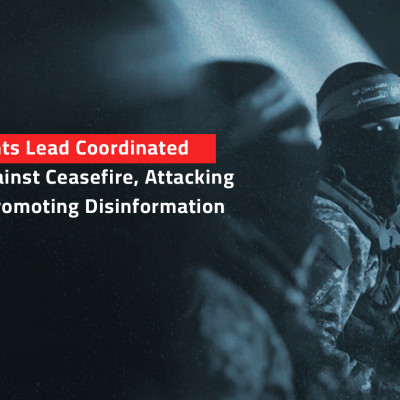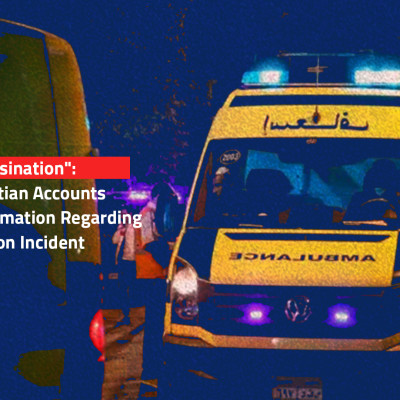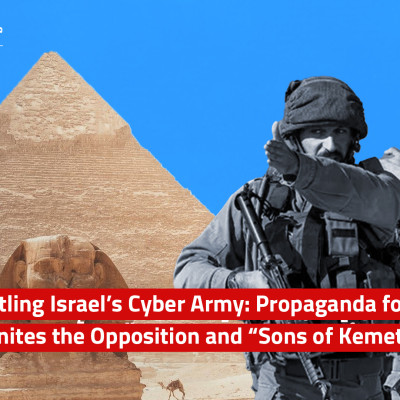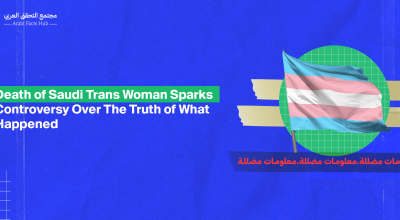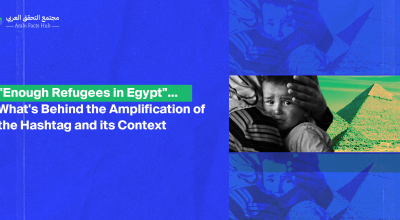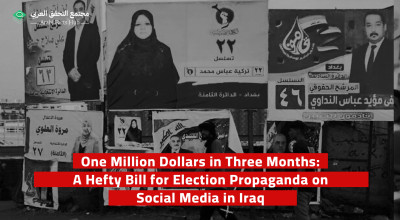Fake Accounts Promote Attacks by Iraqi Militias on Israel
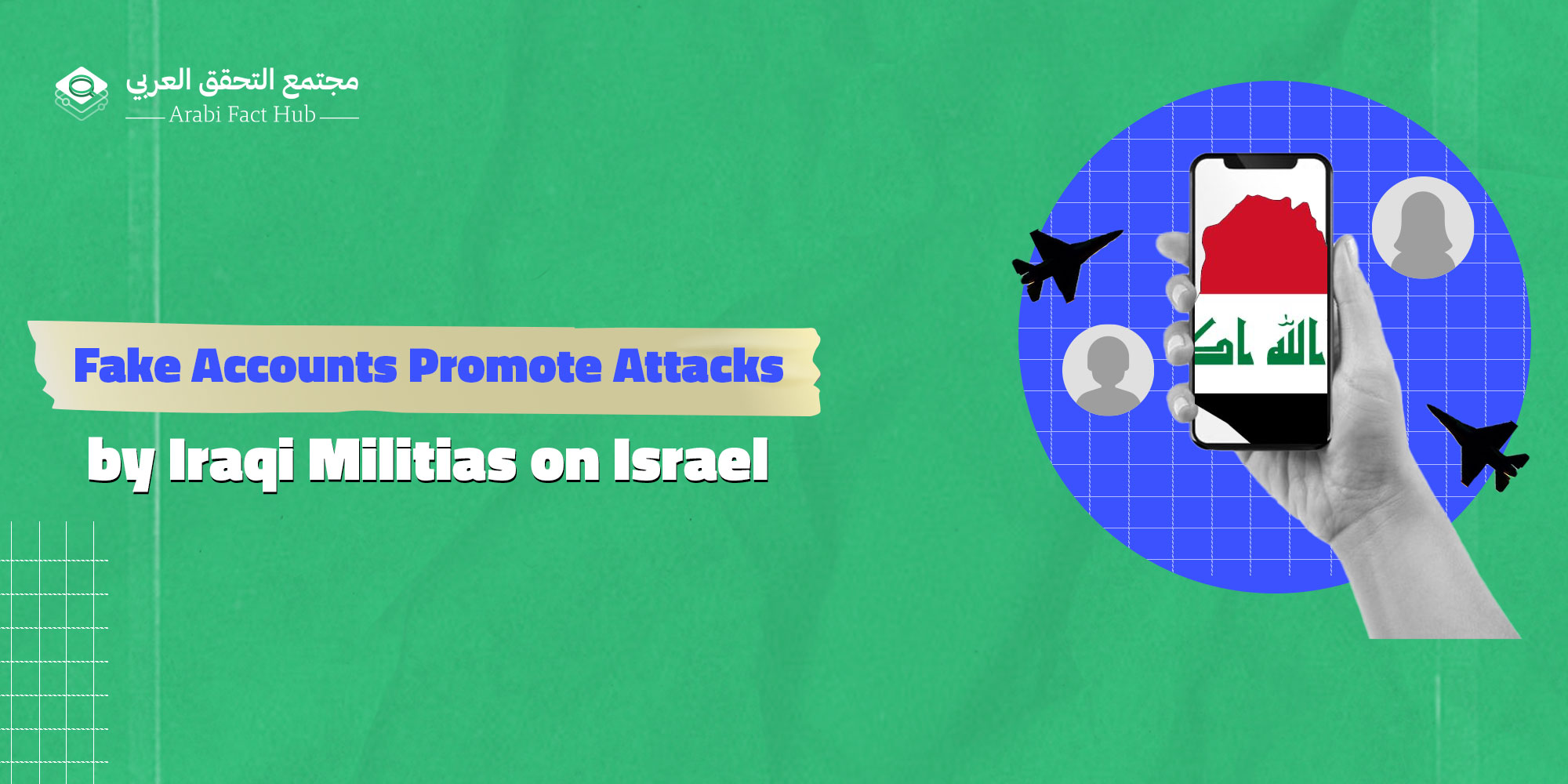
Several hashtags on X promoted the rhetoric of Iran-backed groups targeting an Arab audience and spreading propaganda for the role of Tehran in the region. This effort mirrors Israeli virtual campaigns, within the context of competition to amplify each party's narrative.
Concurrently with the escalation of military activities by Iraqi militias on the sidelines of the ongoing war on the Gaza Strip, coordinated hashtags emerged, created by some fake accounts.
These hashtags, spreading on X promoted an Iran-backed rhetoric aimed at audiences in the Arab world, in addition to propaganda highlighting Tehran's role in the region. This effort parallels Israeli virtual campaigns, within the context of competition to amplify each party's narrative.
During this coordinated wave, the operators summoned a network comprising hundreds of fake accounts to contribute to the dissemination and amplification of the campaign. Alongside Hezbollah in Lebanon and the Houthis in Yemen, the name of militias like the Islamic Resistance in Iraq featured prominently during the war on Gaza.
In December of last year, the Islamic Resistance in Iraq, which encompasses factions like the Hezbollah Brigades and the Al-Nujaba Movement, announced - for the first time - its participation in attacks against Israeli targets, beginning with the city of Eilat overlooking the Gulf of Aqaba. Iraqi militias escalated their strikes during March, reaching at least 14 alleged attacks - according to data from the Islamic Resistance in Iraq via a Telegram channel - accompanied by increased propaganda campaigns by Iran-affiliated factions. In the early hours of March 24th, a Telegram channel posted footage purportedly “targeting the headquarters of the Zionist entity's Ministry of Defense in Tel Aviv by the Islamic Resistance in Iraq on our occupied territories.”
During that time, from March 24th to 26th, the hashtag #Its_The_Time_of_The_Resistance resurfaced on X. In this period alone, there were approximately 26,700 tweets, viewed about 262,000 times, with an estimated additional reach of 864,000 potential views. Moreover, the posts generated over 28,000 interactions, according to Meltwater, a leading tool for social media content analysis.
Activity and timing of the hashtag #Its_The_Time_of_The_Resistance on its return to prominence on the "X" platform - Meltwater
The most influential
Participating in the wave of tweets under the hashtag #Its_The_Time_of_The_Resistance were 1,640 accounts, the activities of which indicate an association with various Iraqi Shia factions close to Iran. These accounts play a role in bolstering the propaganda machine and amplifying their virtual presence. Leading the pack with at least 36 tweets, @abo_mahde313 emerged as the most prolific and interactive account, along with @fadk_alamir93 and @sin98ll. This account mobilized others to amplify the hashtag, engaging in tagging Iraqi, Lebanese, and Yemeni accounts to encourage them to tweet.
The account displays the flags of Iran, Iraq, Lebanon, Syria, and Yemen. It tweets excessively, boasting at least 21,200 tweets since its inception in July 2022. It is known for promoting information from the "Military Media of the Islamic Resistance in Iraq" and content from Al-Ahed channel, affiliated with Asa'ib Ahl Al Haq, which is funded by Iran. Leading Asa'ib Ahl al-Haq is Qais Al Khazali, whose images are widespread across various sections of the channel's website. There is also a website bearing the same name, closely linked to Hezbollah in Lebanon.
What did the campaign include?
The hashtag #It_is_the_time_of_resistance tackled several points. At the forefront was the missile attacks by the Islamic Resistance Bloc in Iraq targeting Israeli bases and facilities. In addition to glorifying and promoting the coalition forces, there was a repetition of posting pictures of Qais Al Khazali, Akram Al Kaabi, the Secretary-General of the Al Nujaba Movement, and Hashim Finyan Rahim Al Saraji (Abu Alaa Al Wala’i), the Secretary-General of the Sayyid Al Shuhada Movement (also known as the Abu Al Fadl Al Abbas Brigade and the Karbala Brigades), all of whom are subject to US sanctions.
An evaluation by our team based on appearance, activity and content shows that the hashtag included repetitive posts circulated by fake accounts.
These accounts were created in recent years, with the latest established in January 2024. Some of them remained dormant for months or even years before engaging in the current campaign, a common tactic employed by the coordinators of online campaigns in the Arab region to manage and operate armies of fake accounts. At times, this can be explained by a desire to avoid detection and subsequent shutdown by X, or to evade attracting attention to themselves, thus avoiding becoming familiar and suspicious, especially after participating in a large-scale campaign. Some of the content on these accounts may be removed and they are typically kept dormant until summoned for a new campaign to leverage the early creation date and lend an air of credibility.
Other fake accounts merely retweeted the content, or simply added the word "support" along with the retweet symbol typically found on accounts involved in retweet networks, such as:
@alyaman500sadfy36293, @hmyd29640, @MhmdFadl15058, @mnjjj222, @qysqys294737, @o7x_j, @kazem_asma43098.

These indicators are supported by Meltwater statistics, which state that 80.1% of the total posts under the hashtag are retweets, equivalent to 21,400 posts, indicating coordinated activity aimed at amplifying the hashtag and the underlying intended messages. It is worth noting that a retweet on X is considered a new post since it is posted by another account. On the other hand, the number of original posts under the hashtag was only 4,600 posts (17.4%). Original posts are not necessarily from accounts owned by real individuals, but the aim is for posts to be issued directly from specific accounts rather than in the form of retweets. We also observed that 22,900 out of the total 26,700 posts under the hashtag were from accounts with unknown locations, another sign confirming the significant presence of fake accounts on the hashtag.
The majority of the posts (at least 3,400 posts) originated from Iraq, while Iran lagged behind with only 17 posts, including posts from an account attributed to the Tasnim News Agency affiliated with the Iranian Revolutionary Guard, which also used the hashtag.
Type of content and known geographical locations of accounts using the hashtag #it_is_the_time_of_resistance - Meltwater
Regional campaigns
The hashtag #It_is_the_time_of_resistance first appeared on December 27, 2018, following the disclosure of a secret visit by former U.S. President Donald Trump to American forces at the Ain Al Asad Air Base in the Anbar Desert, western Iraq. At that time, the most active accounts on the hashtag were involved in regional campaigns, especially in areas of Iranian influence and concern. For example, accounts participated in advertising campaigns for Hezbollah Brigades and the Popular Mobilization Forces, while some accounts targeted the LGBTQ+ community in Iraq. These accounts were also part of coordinated online activities that attacked Saudi Arabia and Bahrain. Among the prominent hashtags that led these campaigns were: #We_remain_loyal, #No_to_the_rainbow_flag_in_Iraq, #The_brigades_are_the_pride_of_IRaq, #SaudiArabia_is_the_filth_of_the_MiddleEast, #The_AlKhalifas_ruined_Bahrain

























